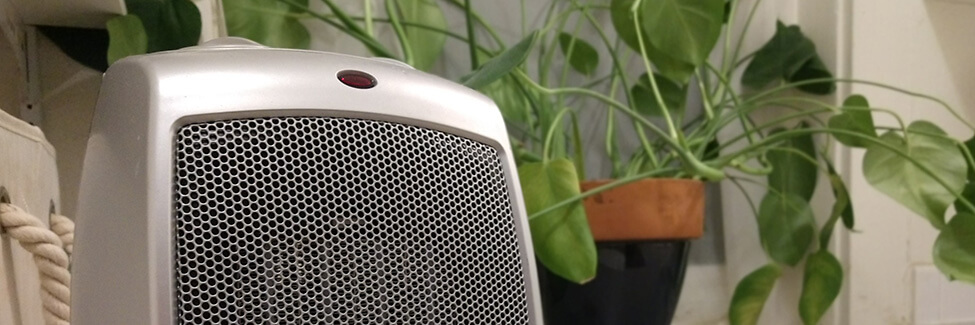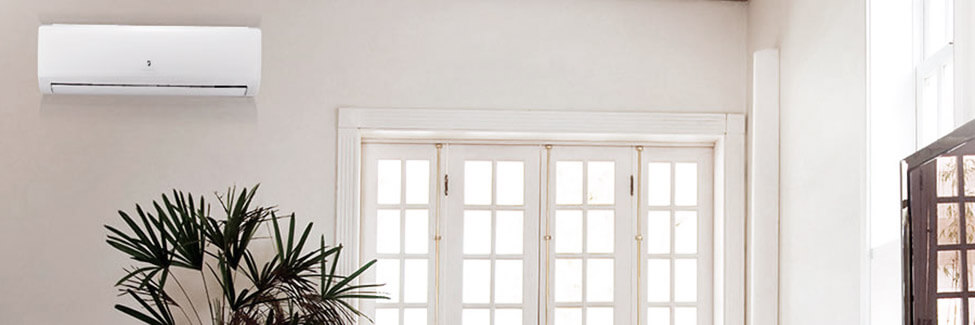
A Homeowner’s Guide to Choosing the Best Heating System | Research Guide
There’s a huge variety of home heating systems, each with its own requirements and heating methods. When you’re choosing to install one for your home, it’s best to know the pros and cons of each. This guide contains a list of central and ductless heating systems, along with their features, advantages, and disadvantages.
Take note that central and ductless heating systems are distinct from space heaters. Space heaters are devices that heat a relatively smaller enclosed space. If you’re looking for a space heater, check out our guide on the ‘Best Space Heaters’. They’re perfect for providing extra warmth on a cold, winter day.
That said, here are six different types of home heating systems that you can choose from:
Central Heating Systems
A central heating system heats multiple connected spaces in your home simultaneously. The heat generated comes from a singular source, which is often placed in a house’s basement or attic. The heat then spreads across your house through a series of ducts or pipes. Note that these ducts are necessary for you to install a central heating system in your home.
Furnaces
Advantages:
- Heated air can be filtered to remove dust and allergens
- Can be equipped with a humidifier or a dehumidifier
- Relatively inexpensive
Disadvantages:
- Makes use of fans that can be noisy
- Moving air can distribute airborne allergens throughout the home
- Not environmentally friendly due to its use of fossil fuels
- Heats the entire home, including unused rooms, leading to wasted energy
Furnaces can be fueled by gas, electricity, or fuel oil. A furnace operations with a forced air distribution system. This means air is heated in the central source, then it’s distributed throughout the house. It’s the most widely used heating system in households. According to Today in Energy, 47% of homes rely on natural gas for their heating, and a majority utilize furnaces.
Boilers
Advantages:
- Radiant heat does not dry out the air
- Modern boiler models are a more energy-efficient heating option
- Can be controlled with valves to regulate water flow and temperature
Disadvantages:
- Radiators take up space in multiple parts of the home
- Older boiler models are inefficient in their utilization of fuel
- Difficult to troubleshoot and repair without a professional
While not as common, boilers and radiators are still found in some homes as the primary central heating system. They can be fueled by gas, liquid propane, or electricity. HomeServe explains that this type of heating system works by continuously pumping hot water from the boiler to the radiators. Afterwards, the hot water is sent back to the boiler to heat up again. If you’re opting to install a boiler in your home, be aware that newer models tend to be more expensive, but they’re also more energy-efficient.
Heat Pumps
Advantages:
- Can be used for both heating and cooling
- Environmentally friendly and energy-efficient
- Allows for precise temperature control
Disadvantages:
- More well-suited to milder climates
- Can be quite expensive
Heat pumps are run with electricity. Unlike the last two heating systems, they don’t heat air or water but instead transfer hotter or cooler air into the home. The two main types are air-source heat pumps and geothermal heat pumps. The former gets the treated air from outside the home, while the latter gets it from beneath the ground. A feature on Wbur shares that heat pumps are a suitable energy-efficient alternative to heating systems that use natural gas. This is because their low carbon emissions and low fossil fuel use make them the more environmentally-friendly option.
In-floor Radiant Heating
Advantages:
- Even heating
- Installed under the floor and out of sight
Disadvantages:
- Relatively slow to heat up and adjust
- Installation can take time and is relatively expensive
- Difficult to troubleshoot and repair due to placement
Radiant heating systems can be fueled by natural gas, liquid propane, or electricity. This heating system consists of a series of tubes underneath your floor, where hot water flows through and radiates heat. DIY Network’s article on radiant floor heating explains that this system causes warmth to rise evenly from the floor. And since it doesn’t heat the room by blowing air in, fewer dust and dirt particles are kicked up.
Ductless Heating Systems
As you can guess from the name, ductless heating systems do not require a series of ducts or pipes to heat your home. They consist of an indoor unit for temperature control and an outdoor compressor. As such, ductless heating systems are much easier to install than central heating systems.
Minisplit Heaters
Advantages:
- Can be used for both heating and cooling
- Separate thermostat per room
- Easy to install and set up
Disadvantages:
- More than one unit required to heat the entire home
- Moving air can distribute airborne allergens throughout the home
Minisplit heaters are electricity-powered systems that are comprise of an outside unit, an indoor air handler, and a refrigerant. This type of system is ideal for homes without ductwork. But take note that you’ll likely need one unit per room. If you want to cover more ground, consider opting for a multi-split system. Though this is likely to cost more.
Air Conditioners with Heating Functions
Advantages:
- Heated air can be filtered to remove dust and allergens
- Can be used for both heating and cooling
- Energy-efficient
Disadvantages:
- Not as effective as traditional heaters
- More than one unit required to heat the entire home
Air conditioners are powered by electricity and are one of the easiest heating systems to install. They work by drawing in warm air, removing its heat, and then releasing it back into your home. Some air conditioners even have different modes you can use to either crank up the heat or save energy. You also have the option to purchase a portable AC unit.
Those were six different home heating systems for you to choose from. Have you made a decision? Before you do, remember to consider your local climate as well as your home construction. These are both important considerations when choosing your home heating system.
Still have questions? Ask an HVAC expert directly via chat or phone.
Published on 2021-03-01 by Ben Travis
Last updated on 2021-03-01


